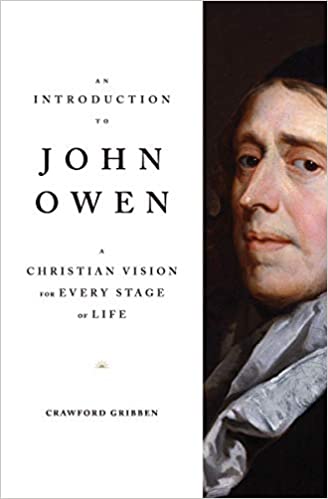A Book Review from Books At a Glance
By Andrew Ballitch
Summary and Review
Crawford Gribben describes his introduction to John Owen as an exercise in “biographical theology,” rather than “theological biography.” His aim varies from so much of the work done on Owen, work taking a historical-theological approach, and instead “sets out to discover the kind of life [Owen] hoped his readers would experience.” Gribben is successful in his endeavor, unpacking in four chapters devoted to childhood, youth, middle age, and death coupled with eternal life, what he helpfully summarizes: “For Owen, spiritual life was about increasing in grace and goodness, in fellowship with each person of the Trinity, in the local and visible, catholic and invisible fellowship of the church, in the context of an often hostile world.”
After his introduction, which offers a brief yet anchoring biography and discussion of Owen’s legacy, Gribben delves into his first category, namely, childhood. Given the 17th century context, with its hostile living conditions, and Owen’s own loss of all ten of his children, he was acutely aware of the shortness of childhood and the importance of parents preparing their children for both this life and the next. In this chapter, Gribben covers Owen’s developing understanding of Baptism, the particulars of spiritual formation, and the significance of catechism.
The chapter on youth describes Owen’s experience as a student at Oxford, which was followed by his conversion and realization that the Christian life came down to communion with God. The difference between hypocrites and true believers was located in their affections. This new devotional recognition, when Owen returned to Oxford for academic and administrative posts in the 1650s, manifested itself in his preaching. When preaching to students, he was engaging the mind and the will, yes, but he was moving beyond these to the affections. What he preached would later be expanded into publications such as Of the Mortification of Sin in Believers and Of Communion with God, which Gribben sees as a “reimagined Calvinism,” contrasted with the scholastic, classical education Owen received at Oxford (80).
It is in the discussion of middle age that Gribben argues for his most interesting insight, namely, Owen’s political theory as an influence on John Locke, his student at Oxford, and classical liberalism. It was in his mid-forties that Owen had to come to terms with the fact that the world as he knew it had ended beginning in 1660 with restoration of the monarchy in England. The fall of the Republic dashed his hopes for both his country and his career. Thus, his political theory evolved in a time of extreme intolerance, when Owen was ministering to ordinary congregants consumed with faithfulness in the banalities of life and work. What emerged was liberty of conscience and freedom of worship for Protestant Christians and Jews. In this chapter, Gribben also highlights the church as the essential context for pursuit of communion with God in a dangerous world.
The last chapter on death and eternal life, Gribben begins with a section on eschatology. This is just one example of the author’s nuanced sensitivity to theological development in Owen. Owen moved from being non-committal on the millennium in his early years, to seeing the millennium in the future in his mature understanding. Gribben then offers Owen’s view of death as another step toward the consummation of the spiritual life. In Owen’s teaching, he acknowledged the anxieties surrounding physical death, but offered the hope of the resurrection and seeing Christ. Gribben writes, “Owen was dying as a happy man,” despite all of his disappointed dreams and the bleak outlook of the future, because he was waiting for Jesus.
In addition to the insight that Owen contributed to the liberal political tradition, Gribben also argues for Owen’s significance in the formation of evangelicalism. He claims that leaders of this religious movement “eagerly appropriated Owen’s emphasis on individual spiritual experience, which they promoted often without proper consideration of his sometimes rather weak emphasis on the importance of the church.” The evangelical movement likely did get much of its emphasis on personal spiritual experience from Owen, him being a theological giant of just a generation or so before the Great Awakening, but it is worth noting that such an emphasis was standard Puritan fair, especially for the dissenters. It is also not evident that Owen’s emphasis on the importance of the church was weak.
This book is a fantastic introduction to Owen. Gribben writes clearly and concisely, helpfully engaging some of Owen’s cardinal priorities and presenting them in an accessible way. Readers who are new to Owen have been served in two ways. The timeline as part of the front matter is more than bullet points. While it includes publications, major events, and Owen’s public service, it explains things along the way, allowing those less familiar with Owen’s context to quickly grasp the contours of his life. Also, the bibliography is an update of the bibliography of Gribben’s previous John Owen and English Puritanism: Experiences of Defeat, making it likely the best window into further reading available. For those looking to engage Owen for the first time, there is no better place to start. For those intimately acquainted with him, expect to be challenged by Gribben’s fresh approach.
Andrew S. Ballitch (PhD, Southern Baptist Theological Seminary) is a pastor at Westwood Alliance Church in Mansfield, Ohio.
